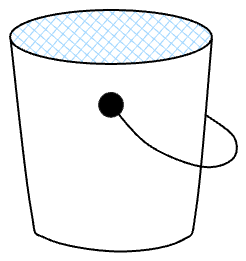A career bucket list for technical writers
What’s next for you in your career? It’s tempting to focus on the bare minimum — staying employed — but identifying new areas of professional development or focus can help you grow your career and find whatever enjoyment you can from the capitalist toil that is an obligation of modern life.
While I was at Splunk, Susan St. Ledger gave a talk about approaching her career with a bucket list. I’d defined my career values, but a bucket list for my career was the perfect way to complement my career values while still growing my expertise.

Even if you have the same title, you can have different experiences with your career and learn different skillsets if you seek out different team sizes, company stages, reporting structures, and working environments.
Identifying that variation has been crucial for me as I’ve stared down a lifelong career doing “just writing”. Did I really want that? Thankfully, technical writing doesn’t look the same everywhere, and that variation is what keeps it exciting for me.
In chatting about next steps in a technical writing career with a mentee, we came up with the following list of experiences and job situations that could be on a bucket list for technical writers.
What types of experiences and job situations might make sense on a bucket list look like for technical writers? I’m still developing my own, but I wrote up this list to serve as inspiration:
Tooling:
- Migrate a doc set to a new platform or tool.
- Implement a doc feedback collection tool.
- Implement an in-product tutorial tool, such as WalkMe, Pendo, Gainsight, or similar.
- Maintain and customize a documentation platform.
Writing process:
- Write in a docs-as-code workflow.
- Write structured content like with Doxygen or DITA-based tools.
- Write in a different markup language (HTML, MediaWiki, Markdown, Restructured Text, AsciiDoc, DITA XML, etc.).
Writing tasks:
- Write a documentation set from scratch.
- Write API documentation.
- Write technical content marketing and/or blog posts.
- Write in-product tutorials and tours.
- Write tutorials.
- Write stellar reference content.
- Reorganize or rearchitect a documentation set.
- Write UI text and error messages.
Writing and design tasks:
- Create detailed diagrams.
- Design graphics and icons.
Collaboration or stretch opportunities:
- Collaborate with marketing on content.
- Do product development, such as by writing an interactive in-product tutorial, or committing code to the product.
- Design a documentation site.
- Perform user research.
- Do customer support.
- Work with developer relations/advocacy on content.
- Develop best practices documentation with the field (sales engineers, professional services consultants, etc.).
- Partner with the web team on SEO improvements.
- Start a naming council to codify and manage product and feature names.
Writing standards:
- Write a documentation style guide.
- Write a UI text/content design style guide.
- Define audiences or personas for the docs.
- Work with editors.
- Define templates for reference and other content.
Writing strategy:
- Define documentation strategy and vision for a product/company.
- Make a business case for documentation.
- Develop documentation analytics KPIs and success metrics.
- Define and implement a triage process.
- Formalize and mature documentation planning processes.
Personal brand:
- Present a talk at a conference like STC Summit, IAC, Write the Docs, LavaCon, Button or others.
- Speak on a podcast.
- Participate in a panel discussion.
- Write about documentation for the company blog.
Writing-relevant roles:
- Be a manager of a large team.
- Be a manager who grows and scales a small team.
- Be a team lead.
- Be a lone writer.
- Be a minion at a large company.
- Mentor a teammate.
- Become an editor.
- Be a scrum master.
- Be a content designer.
If you’re looking for what’s next, whether at your current company or somewhere new, I hope this list helps you consider what you might want to accomplish next!